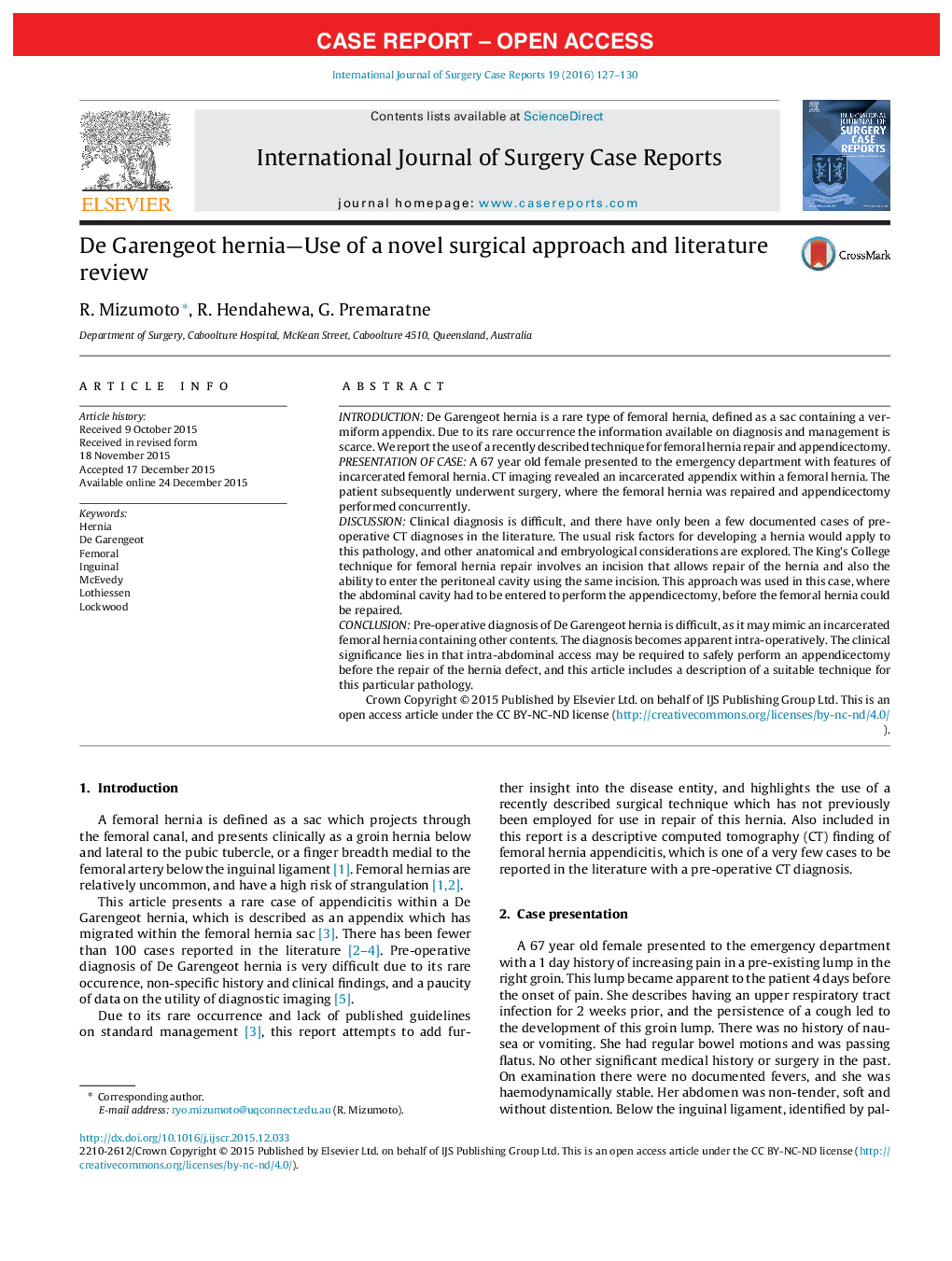| Article ID | Journal | Published Year | Pages | File Type |
|---|---|---|---|---|
| 4288745 | International Journal of Surgery Case Reports | 2016 | 4 Pages |
•De Garengeot hernia is a rare type of femoral hernia that involves an appendix within the hernia sac.•Diagnosis is clinically difficult. Imaging may assist in pre-operative diagnosis.•There are various surgical methods in the approach to repair of femoral hernia. A recently published surgical method is described in this report.
IntroductionDe Garengeot hernia is a rare type of femoral hernia, defined as a sac containing a vermiform appendix. Due to its rare occurrence the information available on diagnosis and management is scarce. We report the use of a recently described technique for femoral hernia repair and appendicectomy.Presentation of caseA 67 year old female presented to the emergency department with features of incarcerated femoral hernia. CT imaging revealed an incarcerated appendix within a femoral hernia. The patient subsequently underwent surgery, where the femoral hernia was repaired and appendicectomy performed concurrently.DiscussionClinical diagnosis is difficult, and there have only been a few documented cases of pre-operative CT diagnoses in the literature. The usual risk factors for developing a hernia would apply to this pathology, and other anatomical and embryological considerations are explored. The King’s College technique for femoral hernia repair involves an incision that allows repair of the hernia and also the ability to enter the peritoneal cavity using the same incision. This approach was used in this case, where the abdominal cavity had to be entered to perform the appendicectomy, before the femoral hernia could be repaired.ConclusionPre-operative diagnosis of De Garengeot hernia is difficult, as it may mimic an incarcerated femoral hernia containing other contents. The diagnosis becomes apparent intra-operatively. The clinical significance lies in that intra-abdominal access may be required to safely perform an appendicectomy before the repair of the hernia defect, and this article includes a description of a suitable technique for this particular pathology.
